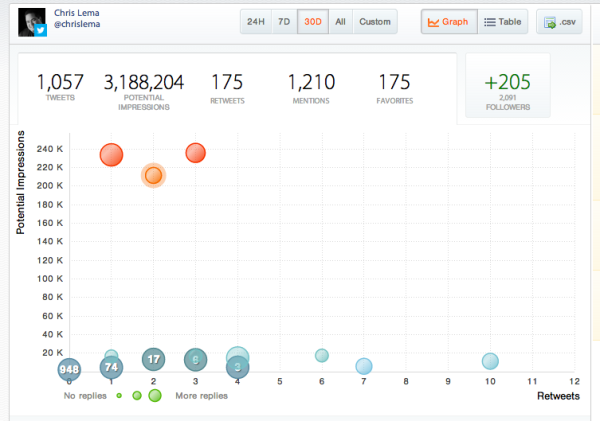Today I want to tell you four stories and make a point. Can you hang?
Story One: Spidering Software
When I was about 26 I worked at a government research lab. It's where super smart people did super smart things. I wasn't one of those folks. I was part of what you'd call the support side of things. I built data systems and online systems to support all the super smart people doing super smart things.
Now to contextualize this time – the internet was just getting started. It was 1996 and when we built things for the web, we used html 3.2 (and tables and frames).
Oh, and I was a kid. But I worked at a super smart place. So I was lucky enough to work on fun projects like creating a spider that would crawl the internet looking for certain content. Now a spider is a kind of software that goes out to the internet, finds a web page, collects all the links on it, stores those, and then goes to one of them and does it again.
Over time you collect tons of links to create a big index. But more importantly, you can capture the html on those pages, and store a snapshot of that page at that moment.
So I was building one of those. And then we heard that a few companies were selling their own spider that we might be able to use. So I did what I always did – I called them up, without any shame, to see if I could buy it. After all, I worked with some super smart people at a super smart place.
When I said, “Hi there, this is Chris Lema from Lawrence Berkeley National Lab” you can imagine which part I emphasized. Yeah, not the Chris Lema part. So I got excite and altavista on the phone. Do you even remember those names?
Anyway, I reached the right person and I asked how much it would cost. And I heard “one fifty.” And as the guy answered, I realized I only had one other question and it was one I wasn't willing to ask.
You see, at 26 the most expensive software I had purchased was Windows 95. So when someone said “one fifty” I knew it couldn't be a dollar and fifty cents. I also knew it couldn't be one hundred and fifty dollars. But I didn't know what it could mean. It couldn't possibly be one hundred and fifty THOUSAND dollars? Right?
The truth, as you can now guess, is that three things have happened since then: a) I've grown up, b) I've sold software for even more than 150k, and c) I learned I wasn't the target market for something, even if I could understand what it was and how it worked.
Story Two: Owning an Island
This week a group of us were in a facebook group in a discussion when I posted a link to one of my favorite aspirational sites. It's an aspirational site not because it does aspirational things on it. It's aspirational because the site is where you can buy an island.
 Now, the thing that made me laugh is that the friends I introduced the site to did the very same thing I did way back when I first was told of the site. See that search box on the right? See how it has a slider for price?
Now, the thing that made me laugh is that the friends I introduced the site to did the very same thing I did way back when I first was told of the site. See that search box on the right? See how it has a slider for price?
So one of my friends wrote, “I guess if I'm sorting by price then I am not their target market.”
Hey, I'm sure we all want to own an island someday, and it can be a real aspiration for some, but guess what folks, the real target market for this site doesn't start by adjusting price – they're busy picking where they want their island to be.
Story Three: CrowdBooster
 A few months ago the free service that Crowdbooster had been offering to people stopped being free. Now if you don't know this software, it's an online service that does analytics on your social media accounts. There are others I've tried but I keep coming back to this software because it works for me. It shows me things in ways I like to see and can quickly grasp.
A few months ago the free service that Crowdbooster had been offering to people stopped being free. Now if you don't know this software, it's an online service that does analytics on your social media accounts. There are others I've tried but I keep coming back to this software because it works for me. It shows me things in ways I like to see and can quickly grasp.
They went from free to $8/month. And tons of people stopped using their services. I decided to stay on and pay them their money. Clearly I'm part of their target market. Others weren't.
Story Four: Adobe Software
Adobe recently announced that they would be terminating their desktop software and only selling their products for a monthly fee. Some long-time users were clearly pissed.
Me? I'd been on the plan for an entire year already. Know why? Because I was part of their target market. I was the guy who alternated what suite I bought every 16-18 months, between a designer suite and the master suite. Neither package was cheap.
But I use multiple products. And I use them a lot. And I make regular purchases.
So when I could get onto the monthly plan for $30/month (normally $50), it was a steal. Even at $50 it would be a steal. I had been investing more than $600/year with Adobe.
But I have friends who weren't happy. They understood it. They just didn't like it.
My Point: Target Markets
And by now you know why: no one likes to hear “you're not my target market.”
I get it. Today I tweeted back and forth with some friends about Adobe's decision and one of them said they were a long time user. And that's when I made the distinction between customer and a user. You can see the exchange here.
@jamesdalman @jaredatch @leftlane no question there are a lot of ppl who use their software daily. But they're users, not customers.
— Chris Lema (@chrislema) May 8, 2013
https://twitter.com/jamesdalman/status/332191561410555905
@jamesdalman @jaredatch @leftlane Oh yes. A HUGE difference. Clients pay you. Users, um, use you. 🙂
— Chris Lema (@chrislema) May 8, 2013
Just because you use software, even if you use it daily, doesn't make you the target market of the people that make the software. You're only the target market if you pay for that software. And not just once every three or four years.
Chris Lema Loves Segmentation
I have people who come to this blog and read it. They are users of my content. I have some people who follow the steps of the tutorials. Sometimes they even buy me a cigar. I have people who send me questions via my contact (and even testimonial forms) and sometimes I even answer them.
None of them are my clients.
My clients, and my target market, are people who engage me in long-standing relationships where I coach and help them grow their business and they pay me regularly.
No one likes to hear you're not my target market, but if you read my post about minnows, dolphins and whales you know that I use a model to constrain how I help minnows (so the cost is low), engage dolphins to help them out, and consider whales the core of my target market.
What's funny is that when you're clear about it, people can normally realize for themselves where they stand and act accordingly. I had a friend write me saying, “I'm clearly a minnow but I love how you take care of minnows.”
This post isn't really about Adobe. It's about segmentation. I've pointed you to my minnows, dolphins, whales post, and now I'll suggest you check out my post about barnacles and butterflies.
Either way, having clarity about your target market is critical – even if people don't always love it.

